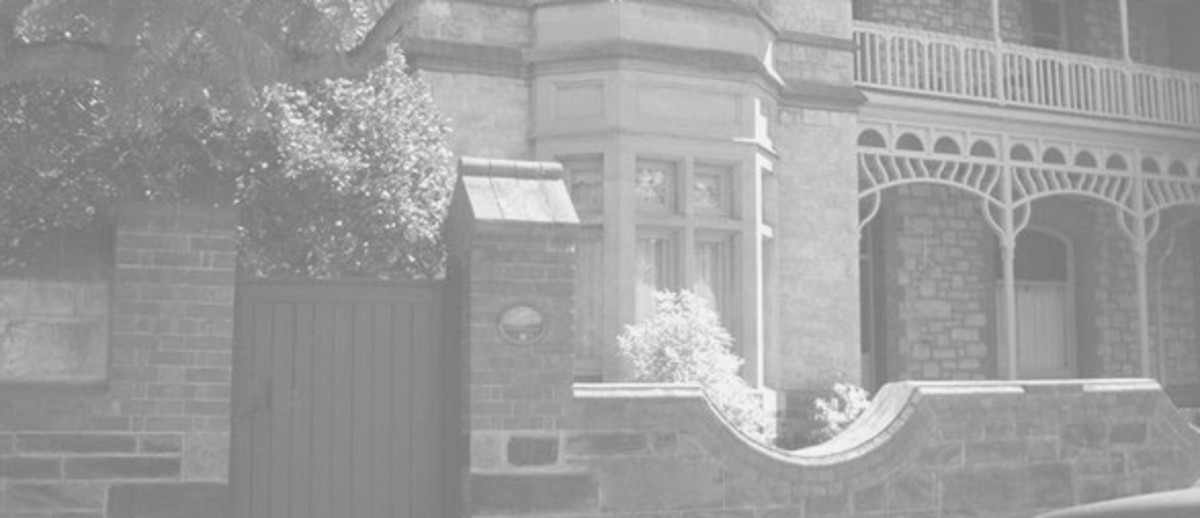Subject
ContributeThe antecedents of the built heritage movement in Australia can be found in nineteenth-century Britain, where the designer and radical socialist William Morris argued that each generation has a duty to look after the built heritage for future generations. Modern conservation approaches have evolved from his views that the historical significance of a building is protected by preserving its physical fabric.
Prior to the Second World War only a handful of historic structures in South Australia were actively preserved: Frenchman’s Rock near Penneshaw on Kangaroo Island (dome constructed 1906); Dingley Dell near Port MacDonnell in the South East, home of poet and horseman Adam Lindsay Gordon (purchased 1922); and Kingston House and Kingston Park Reserve in the beachside suburb of Kingston Park (purchased 1924). The natural environment was better served, with the state’s first national park, Belair, being set aside in 1891.
In 1955 the National Trust of South Australia was formed by volunteers to help preserve historic and natural places. However, with no legislative power to prevent demolition, the Trust could only save properties by purchasing them, or by exerting pressure on governments, organisations and individuals. The first Australian legislation to protect built heritage, the Aboriginal and Historic Relics Preservation Act, was proclaimed in 1967 but was principally concerned with the protection of Aboriginal heritage.
The built heritage movement became firmly established in the eastern states with the property boom of the 1960s, when the loss of notable buildings fuelled popular support for greater protection of European heritage places. The movement was slower to take off in South Australia because of the slower pace of development. The demolition of the South Australian Hotel on Adelaide’s North Terrace in 1971 was probably the catalyst for stronger state legislation to protect heritage places. At the same time popular feeling for heritage focused on the ANZ Bank (now Edmund Wright House) in King William Street, Adelaide, and the campaign to stave off demolition was significant in further raising consciousness about heritage protection. The property was purchased by the Dunstan Labor government, but buying buildings was not a long-term solution; heritage legislation was called for.
The continuing demolition of significant buildings saw heritage legislation enacted throughout Australia, beginning with Victoria in 1974 and concluding with Tasmania in 1995. Federal heritage legislation was enacted in 1975. Political acceptance of and public support for heritage protection enabled the state government to enact the South Australian Heritage Act 1978, which sought to protect places by listing them on a heritage register and creating development controls. South Australia pioneered a systematic regional approach to heritage assessment.
During the 1980s state heritage controls did not satisfy the public mood because of a widespread desire to extend the scope of heritage protection beyond grand mansions and public buildings. In 1983 Aurora Heritage Action formed following an unsuccessful attempt to prevent the demolition of the Aurora Hotel in Hindmarsh Square, Adelaide. This lobby group provided a focus for heritage activism for the next 11 years.
The aim of the first generation of heritage legislation was to prevent demolition of buildings, but during the early 1990s the Heritage Act was reviewed. The resultant Heritage Act 1993 sought to conserve heritage places in cooperation with owners, thus assigning more power to the community, while the Development Act 1993 gave local councils the means to protect places of local significance.
All heritage agencies in Australia have sought to standardise their protection criteria. In general these include historical, architectural, technical and cultural merit. No doubt the criteria will undergo further change to incorporate shifting values and attitudes about what is culturally significant, but the administrative and legislative basis for built heritage protection is well established in this state.
Following a review of heritage in the early 2000s the Heritage Act was amended on 17 November 2005 and renamed the Heritage Places Act 1993. Key outcomes of this review were increased links with local heritage through legislation and greater funding, as well as a greater strategic role for the new South Australian Heritage Council, including advising the Minister on national and international developments in heritage policy and practice. Increased funding was directed to local councils through a heritage advisory scheme that strengthened the responsibility of both state and local government to heritage protection.




CommentAdd new comment
Quickly, it's still quiet here; be the first to have your say!